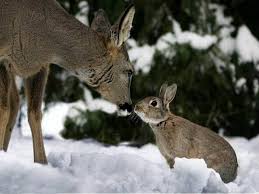The History of Discovery
Discovery is a unique development, located within the Colorado Springs city limits, a few minutes west of I-25 and just South of the Air Force Academy. It is within Academy School District 20, one of the highest rated school districts in Colorado. Discovery was developed in the 1970s and consists of approximately 130 acres of wooded land. To preserve the beauty of the area, streets were designed to follow natural contours and miss special trees, clumps of scrub oak, and rock formations. Covenants were written to provide control over design, quality, and environmental compatibility of the homes. As a result of these covenant protections, today Discovery is a beautiful and mature community.
The Covenants are administrated by the Discovery Homeowner’s Association which is self-managed by a Board elected from the full membership of the 332 property owners within the sub-division. All property owners may nominate and vote on themselves or other members to serve on the Board at the Discovery HOA annual meeting.
In October and December 1972, the Deld Corporation submitted plans to the City Planning
Commission for Discovery filings 1 and 2 (the area on Buckeye Drive). Members of the
Corporation were David Sellon, Ed Rudolph, Leonard Kraushaar, and David Barber. The first
letters of their names made the DELD in the corporation's name.
The developers intended for Discovery to preserve the natural environment and create a
distinctive residential community. Streets were designed to follow natural contours and miss
special trees, clumps of scrub oak, and rock formations. Wooden light posts and street signs
were installed. Hundreds of Ponderosa Pines infected with Pine Beetle and Mistletoe were
removed and hundreds of new trees planted. They gave the City 11.7 acres to create
Discovery Park.
Covenants were written to provide control over design, quality, and
environmental compatibility of the homes to be built. No house would be permitted to be
constructed on any lot at a cost of less than $25,000 and had to be at least 1,400 square feet.
By 1974 the lots were ready for sale, but it was a bad time to sell real estate. Colorado Springs
was in the middle of a gas moratorium which limited new construction. Most of the lots were listed at $8.000 to
$10,000. It's interesting to also note that City utility tap fees (for water, sewer, gas, and
electricity) were about $1,700. Today tap fees for similar property would be about $12,000.
Filing 3 (Wintery Circle and part of Carved Terrace) was completed in 1976 and the Deld
Corporation was awarded the “Parade Of Homes” that year. The Parade included all
of Wintery Circle and most of the lots were sold in one weekend. Other filings were quickly
developed and, in 1977, the Deld Corporation was again awarded the Parade Of Homes in
filing 6 (Wintery Loop). The last filing, number 9, was completed in 1978.
By 1977, all of the lots in filings 1 and 2 had been sold and architectural control was turned
over to the property owners. Each filing had its own Covenants. In December 1980, the
Covenants were amended to place all of the Discovery filings under one Covenant. The new
Covenants named six people to an Architectural Control Committee and a Board of
Directors who incorporated the Discovery Home Owners Association as a nonprofit
corporation. The initial Board of Directors also provided the HOA By-laws.
In April 2012, the Covenants were updated to reflect current architecture, materials,
ordinances, and laws.
There are 332 lots in Discovery, three of which are vacant and owned by
adjacent property owners. In the last 40 years, Discovery property value has greatly increased.
Some credit for this can be given to the Discovery Homeowners Association, but much of it is due to the pride our neighbors take in doing the little maintenance and modernization things that keep Discovery one of the most desirable neighborhoods in Colorado Springs!
In addition to nice human neighbors, Discovery has an abundance of signature

Colorado wildlife. Mule deer, bear, rabbits, coyotes, raccoons, foxes, and bobcats all call Discovery home. There is also a large resident bird population including owls, magpies, woodpeckers, turkeys, and many, many more. Depending upon the season, hummingbirds, warblers, buntings, tanagers, and flycatchers flit from branch to branch as two major bird migration routes (the Pacific Flyway and the Central Flyway) run through Colorado.
While it is a great idea to feed the birds, please do not feed our other wildlife. Aside from being against the law in Colorado, feeding our wildlife encourages a degree of familiarity that may then become dangerous for both wild and human neighbors.